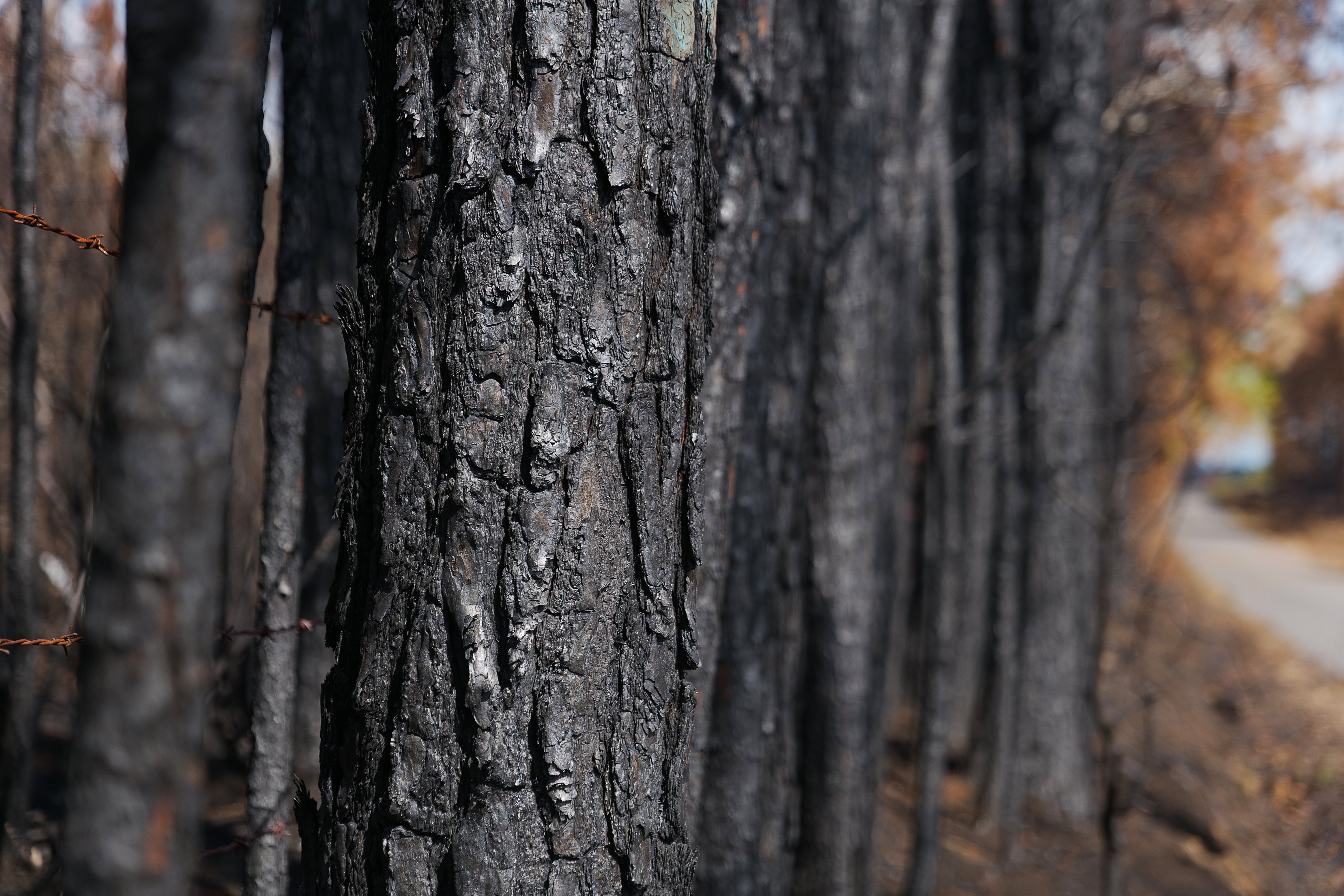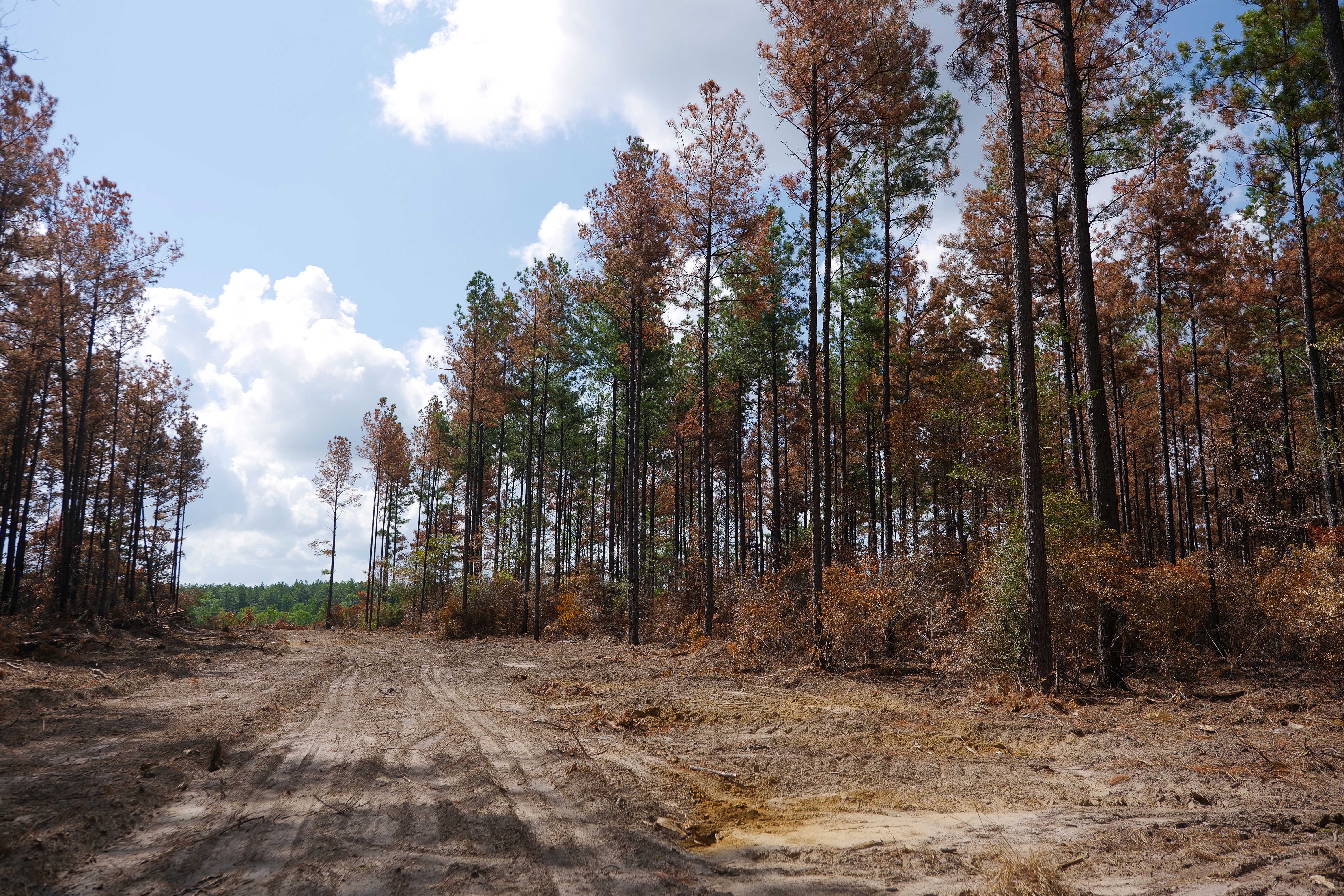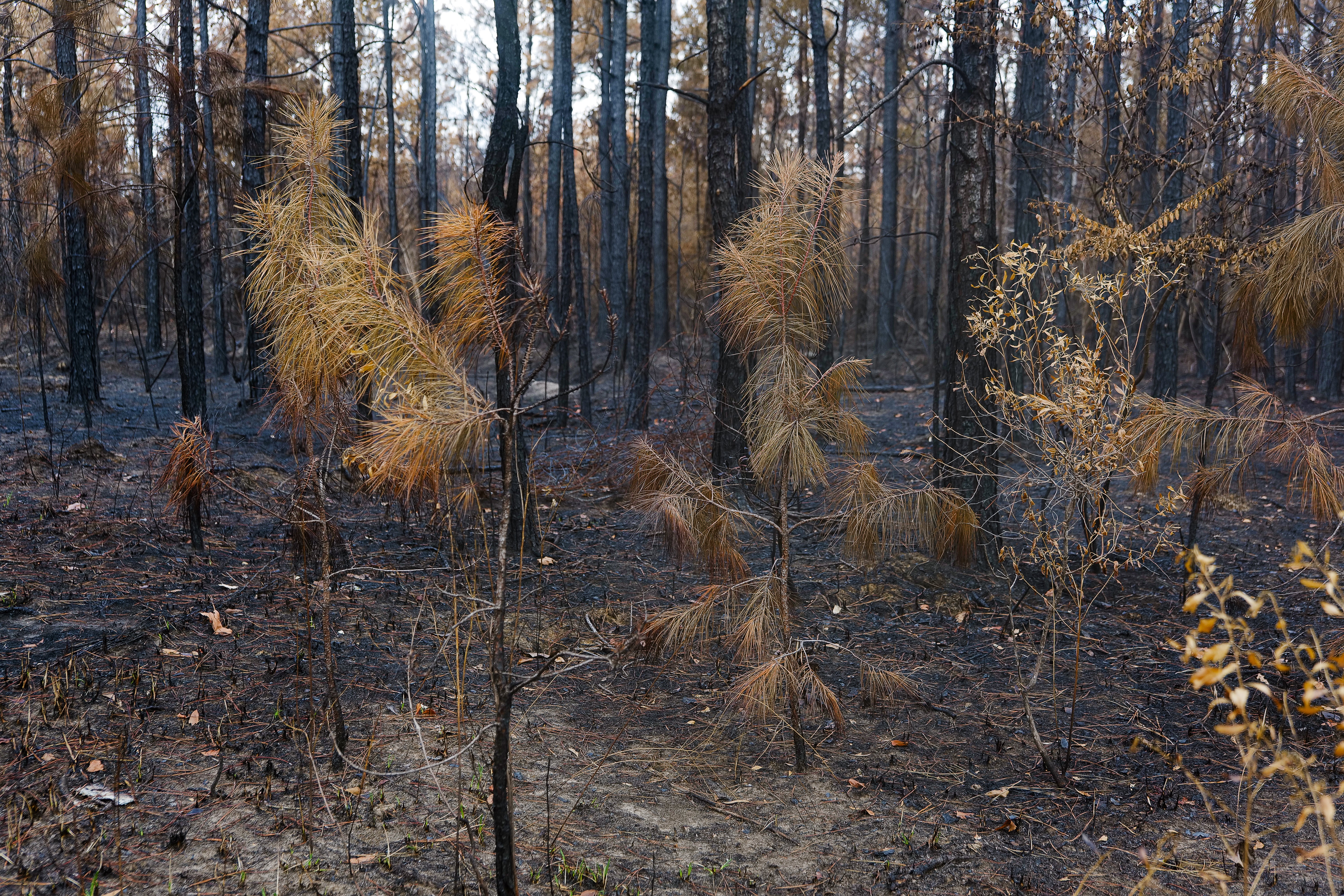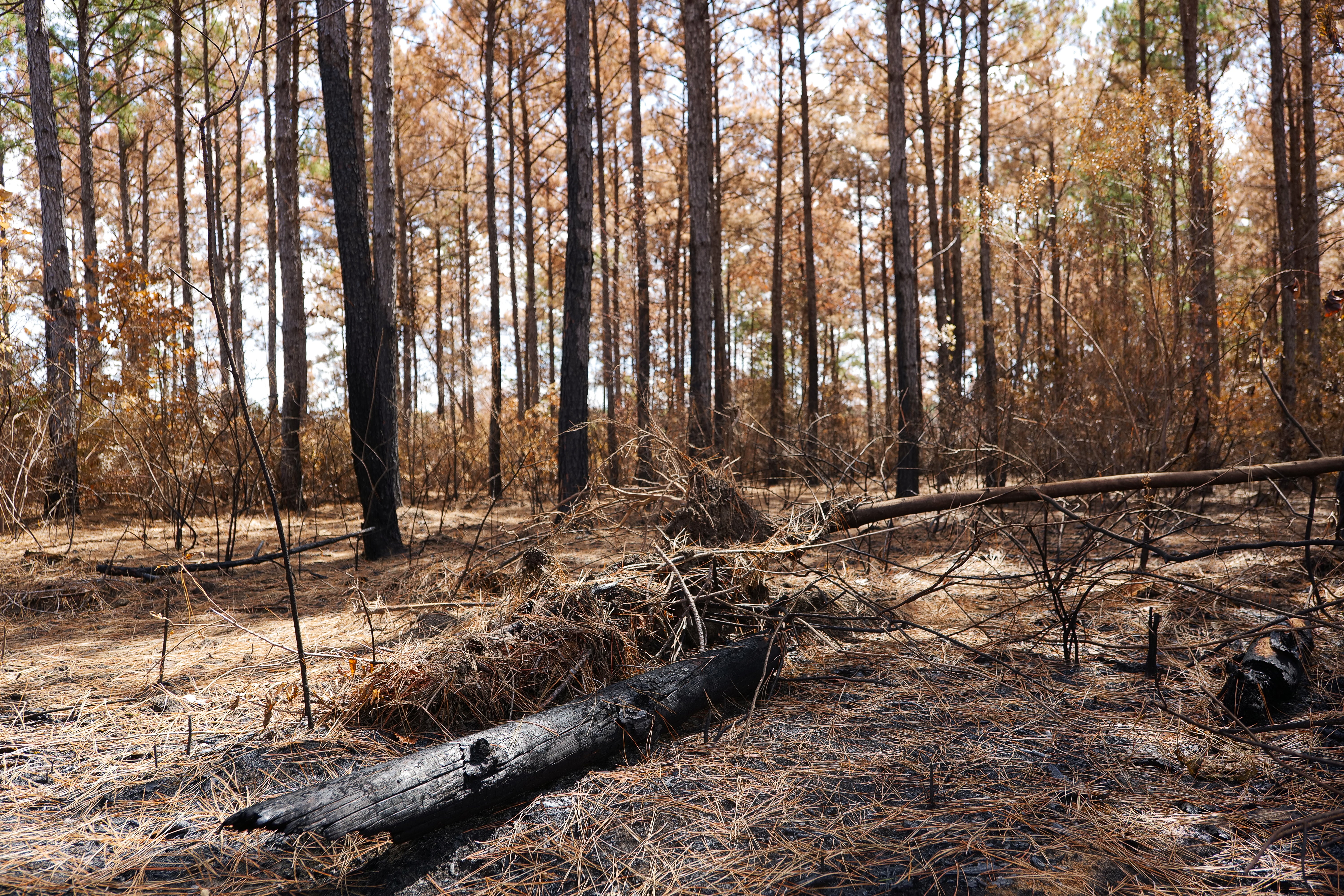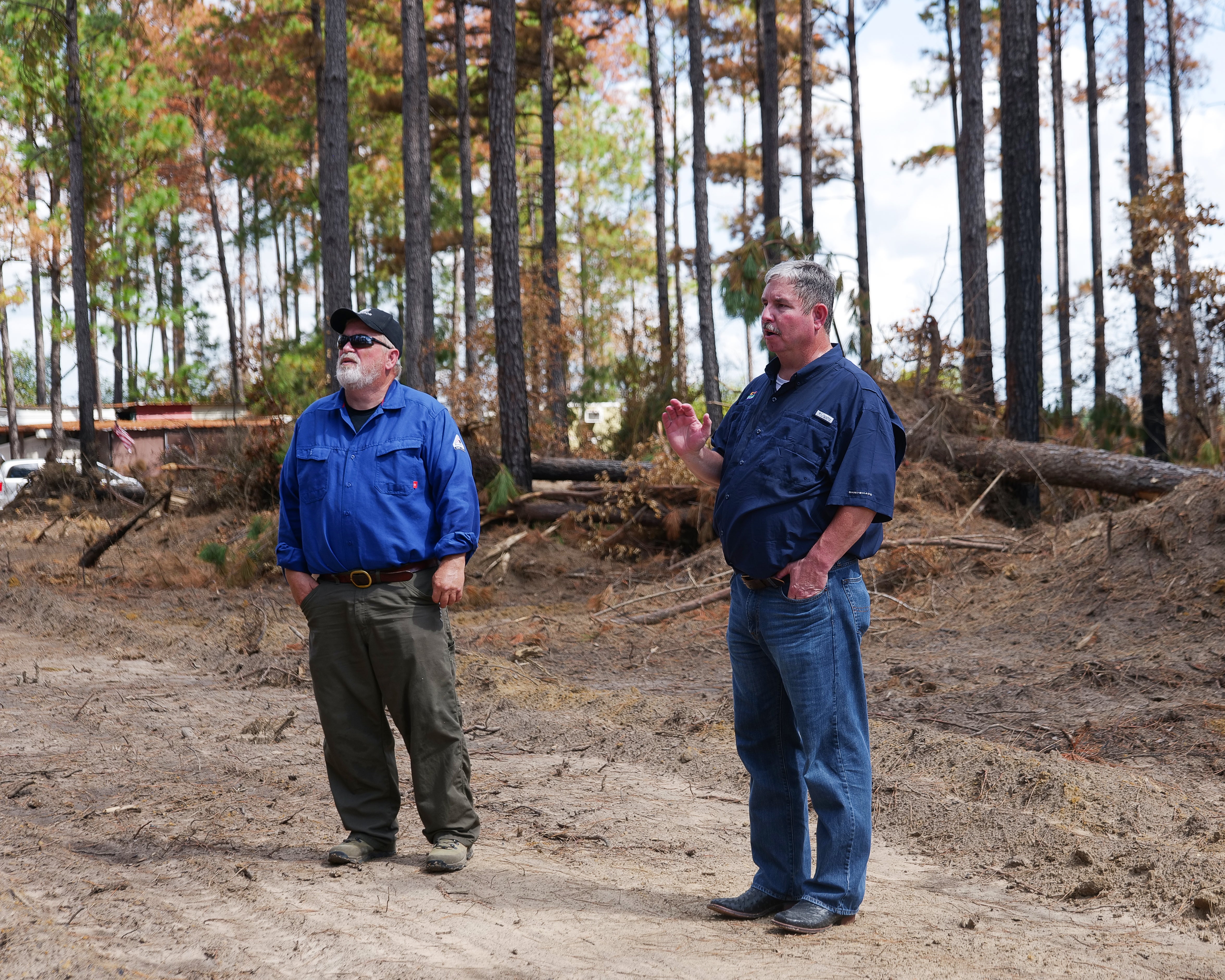‘It is really tragic’: Wildfires wipe out income for Louisiana forest landowners
Published 2:08 pm Friday, September 8, 2023
By Olivia McClure
WESTPORT— In west-central Louisiana, where wildfires have ravaged thousands of acres of drought-stricken forests in recent weeks, more has been lost than just trees.
For many people, the towering pines that define the landscape of this rural region represent family inheritances, years of investment and hopes for the future. Growing trees takes a long time, but the cash they bring in when cut is worth the wait.
This summer’s fires have dimmed those prospects for some — adding insult to injury in an area still dealing with storm damage from three years ago.
“Many of these landowners already incurred losses back in 2020 with hurricanes Laura and Delta,” said Robbie Hutchins, an area forester with the LSU AgCenter. “And now, the timber stands they had left, they’re decimated. These folks were counting on this for retirement income, for college funds for kids or grandkids, and now they no longer have this income source — and they now have the burden of the cost of trying to reforest it.”
“It is really tragic for forest landowners,” Hutchins added. “I can’t overstate how devastating this is.”
Pine forests that should be vibrant and green are now a striking image of dead, brown needles and charred, black bark. Crews are still working to get fires under control, and there is some risk of them reigniting and spreading to new places in the coming weeks as Louisiana enters what is typically its driest time of year.
Attention is now turning to what is next for landowners — small ones who may have inherited 10 or 15 acres and large landholding companies alike — as the economic fallout of the wildfires begins to come into focus.
“An average loss on a pre-merchantable plantation — one that is not old enough to harvest for a merchantable product — is about $1,000, $1,500 an acre. If it’s a merchantable stand, especially a mature stand that’s already grown into a sawtimber-size stand, you could be looking at $2,000 to $2,500 an acre worth of loss,” Hutchins said. “When you start thinking about the almost 50,000 acres that have burned, that is a significant economic loss.”
Small producers face challenges
Most mom-and-pop forest landowners do not have much of a safety net.
“One of the things we all need to understand that is so devastating about this financially is, unlike row crops, there are no programs available like crop insurance,” Hutchins said. “Forest landowners don’t even have the option of insuring their timber.”
Some cost-sharing programs, such as the state Forest Productivity Program, are available to help small, private forest landowners with site preparation and replanting expenses.
Hutchins has been busy lately directing people to information on programs for which they may qualify. The assistance can make a big difference for those who have lost valuable timber and are now staring down the cost of reforesting damaged property.
“That’s a double whammy if you’ve lost your initial investment and you’ve got to turn around and dump that kind of money into the land,” he said.
Economy depends on timber
Companies that manage large tracts of timberland and mill owners will face repercussions from the fires, too. Questions are swirling about how the timber supply will be impacted, which could have a trickle-down, negative effect on the local economy, Hutchins said.
“Do you need as many logging contractors? Do you need the fuel suppliers, the equipment manufacturers and dealers?” he said. “The whole economy of this area is based on the timber industry.”
Timber is the state’s No. 1 agricultural commodity. Nearly 15 million acres — more than half of the land in Louisiana— is covered in forests.
“Forestry and the forest products industry has a greater than $10 billion per year impact on Louisiana’s economy,” Hutchins said. “Forestry and logging are the backbone of rural Louisiana, especially western Louisiana and southwest Louisiana. It’s a major employer here.”
Hutchins spent a recent Tuesday with Paul Stone, a conservation forester with Crosby Resource Management, checking out trees that were charred by what has been named the Highway 113 Fire. Also known as the Cooter’s Bog Fire, it is estimated to have burned about 8,000 acres in Rapides and Vernon parishes.
A much larger blaze, the Tiger Island Fire, has destroyed more than 30,000 acres in nearby Beauregard Parish. Several other, smaller fires are burning in west-central parishes.
While devastating, these kinds of large wildfires are not unprecedented in this part of Louisiana. Stone and Hutchins remember a similar situation in 2000, when fires burned about 30,000 acres near Oakdale and 10,000 more near Lacamp.
About half of the current fires are believed to be the result of arson, Stone said, with the rest being sparked by lightning strikes from summer storms with lots of energy but little rain.
Some timber salvageable
Stone said his company, like many landowners, is planning to salvage what it can and then replant.
“Some of the large timber we may be able to salvage,” he said. “We’ll have to move it a longer distance to mills that are willing to accept wood that’s been burned.”
Local mills are generally rejecting burned material because of the type products their wood is used for, he said.
“The black bark and black wood interferes with their pulping process,” Stone said. “In all likelihood, we will not be able to salvage any pulpwood, and the sawtimber will be reduced to what is merchantable and what can be hauled at a reasonable rate.”
Pulpwood is primarily used for making paper products while sawtimber refers to logs that can be sawed into lumber.
Fire risk remains
As Stone and Hutchins stood in a fire line where trees had been cut down to stop the spread of flames, they examined a stand of scorched pines near the Rapides Parish community of Westport. Dead, brown needles drifted down from overhead.
“They’re falling like rain,” Hutchins observed.
The piles of pine needles along with downed timber that’s still on the ground from the 2020 hurricanes are causing concern as wildfires continue to burn and as Louisiana’s typical fall fire season approaches. They could provide fuel for old fires to reignite and for new ones to start, especially once drier, windier and cooler weather arrives.
“All those conditions are normally what we fear,” Hutchins said. “But now, we fear them even more.”
Stone and Hutchins, both veterans of the forestry industry, know from experience that completely extinguishing big wildfires takes a lot of time and effort.
“We’ve had reburns take off 30 days later from a previous fire when stumps were burning that long underground,” Stone said.
‘It’s important for all of us’
The foresters are hopeful for rain and are grateful for the outpouring of support from other states.
While the two surveyed damaged forests, firetrucks and pickups hauling equipment passed consistently on country roads that usually see only occasional local traffic. They bore decals from agencies in Texas, Idaho, Georgia, North Carolina and many other states.
Hutchins is optimistic that the tall pine trees that make up the scenery of this area of Louisiana will one day return. Economics aside, he said, forests are valuable to everyone.
“It’s important for all of us, whether we are forest landowners or not, that these lands be reforested,” he said. “Healthy, growing forests produce lots of oxygen and clean water. They store lots of carbon from out of the atmosphere.”
If there is any silver lining to the situation, he added, it is that relatively few homes have been lost to the fires.
“Thankfully, for the most part, it has been primarily forestland that has been affected,” he said.


